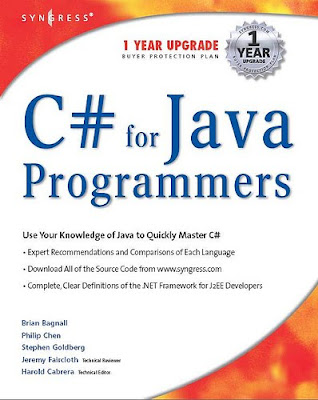
Contents
xi
Chapter 1 The .NET Philosophy 1
Introduction 2
Overview of the .NET Platform 2
Examining the .NET Framework Features 4
Multilanguage Development 5
Platform and Processor Independence 6
Automatic Memory Management 7
Versioning Support 7
Support for Open Standards 8
Easy Deployment 9
Interoperability with Unmanaged Code 10
Providing Security 11
Understanding the .NET Architecture 13
The Common Language Runtime 14
The .NET Framework Class Library 15
The Microsoft Intermediate Language (MSIL) 17
Just-In-Time Compilation 17
Following .NET Code from Source to Binary 18
Summary 21
Solutions Fast Track 22
Frequently Asked Questions 24
Chapter 2 Introducing C# 27
Introduction 28
The C# Language 28
Similarities with Java 29
Differences with Java 30
Getting Started 32
Installing the .NET Framework SDK 32
Creating Your First C# Program 33
Compiling and Running the Program 34
Using the Debugger Tool 37
Using Different IDEs 40
Visual Studio.NET 41
Other IDEs 44
A Stroll through C# 45
Creating the Media Player Application 45
Rapid Application Development
with Visual Studio.NET 54
Summary 60
Solutions Fast Track 60
Frequently Asked Questions 62
Chapter 3 Language Fundamentals 63
Introduction 64
Main() Method 64
Command Line Arguments 66
Return Values 69
Single-Line and Multiline Comments 72
XML Documentation Comments 74
Data Types and the Common Type System 82
Variables 85
Constants 87
Assignment Statements 87
Conversions between Data Types 90
Operators 92
Mathematical Operators 92
Assignment Operators 93
Increment and Decrement Operators 95
Relational Operators 96
Logical Operators 97
Bitwise Operators 98
Ternary Operator 99
Operator Precedence 100
Preprocessor Directives 100
#define and #undef 102
#if, #elif, #else, and #endif 102
#error and #warning 106
#region and #endregion 107
#line 108
Namespaces 110
Summary 112
Solutions Fast Track 112
Frequently Asked Questions 115
Chapter 4 Programming Structures 117
Chapter 5 Objects and Classes 179
Chapter 6 Object-Oriented Programming 217
Chapter 7 Other C# Features 267
Chapter 8 Delegates and Events 305
Chapter 9 Attributes and Assemblies 339
Chapter 10 Multithreading 373
Chapter 11 Working with I/O Streams 405
Chapter 12 Creating User Interfaces with Windows Forms 455
Chapter 13 Web Development with C# 479
Chapter 14 Working with ActiveX,
COM, and Unmanaged Code 527
Introduction 528
Working with Unmanaged Code 529
Interoperability with Unmanaged Code 530
Managed Code Calling an
Unmanaged COM DLL Function 531
Managed Code Calling an Unmanaged
COM Object or an ActiveX Control 531
Unmanaged COM DLL Calling
Managed .NET Code 531
Working with the Platform Invocation Utility 532
Working with COM Components 535
Creating a Simple COM Component 536
Runtime Callable Wrappers 539
Creating a Runtime Callable
Wrapper for a COM Component 541
Building a Client for the RCW 544
Examining Runtime Callable Wrapper
Properties 546
Using Late Binding RCWs 548
Limitations of Using RCWs 551
Working with ActiveX Controls 552
Differences between ActiveX
Controls and Windows Forms Controls 552
Using the ActiveX Control Impoter
Utility (AxImp.exe) 553
Using Visual Studio .NET to Impot
ActiveX Controls 555
Working with Pointers 559
Unsafe Code 559
The unsafe Keyword 560
The fixed Keyword 561
Summary 564
Solutions Fast Track 564
Frequently Asked Questions 566
Chapter 15 Microsoft Says JUMP—
Java User Migration Path 569
Introduction 570
What Is J#? 571
Features of Visual J# 572
Using Visual J# 573
Creating a Simple Visual J# Application 578
Summary 592
Solutions Fast Track 592
Frequently Asked Questions 593
Appendix A C# Keywords and
Java Equivalents 595
Index 601
Download
Another C# Books
No comments:
Post a Comment